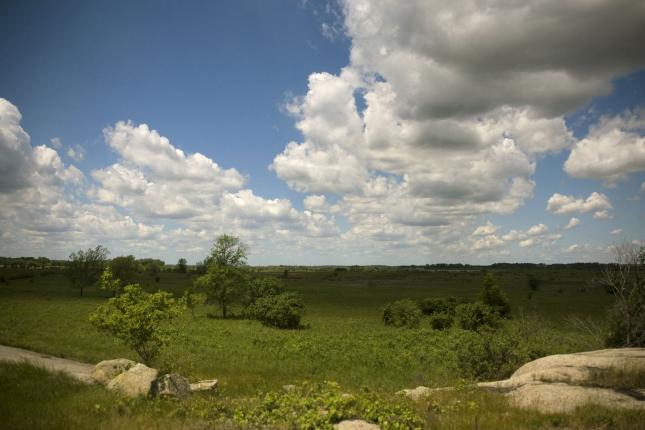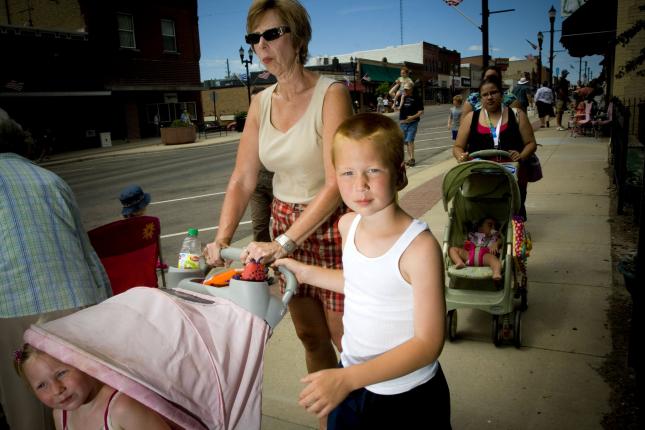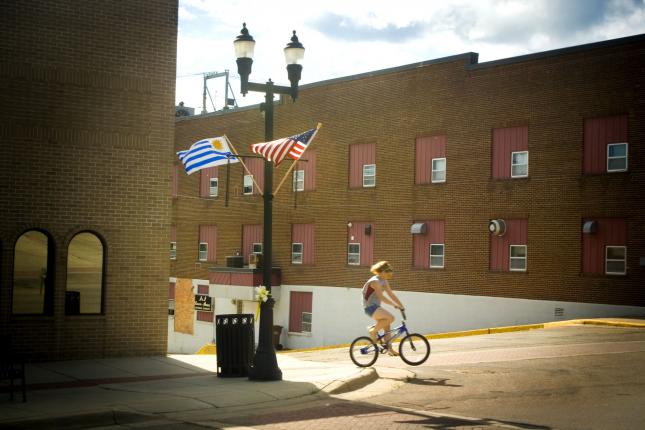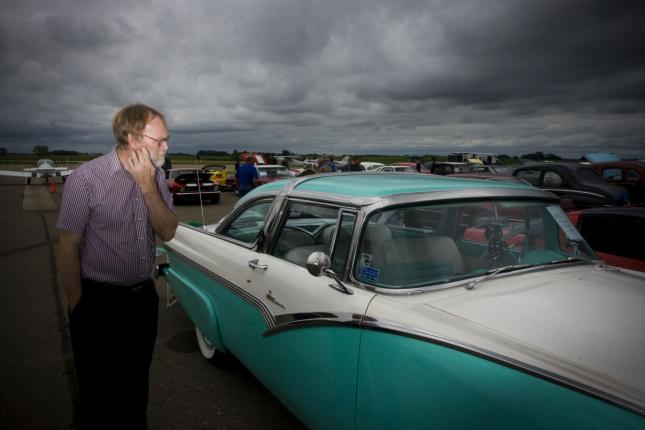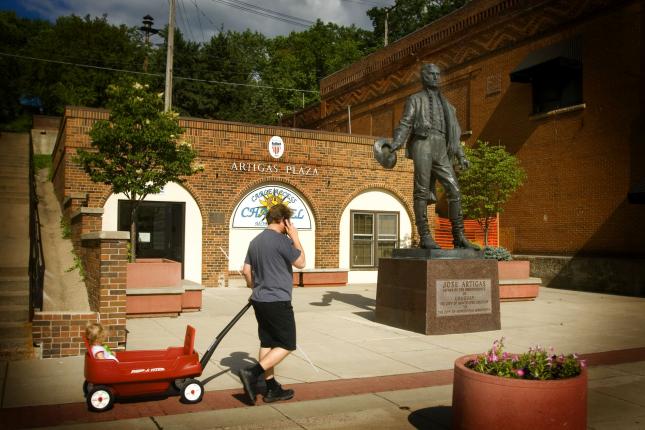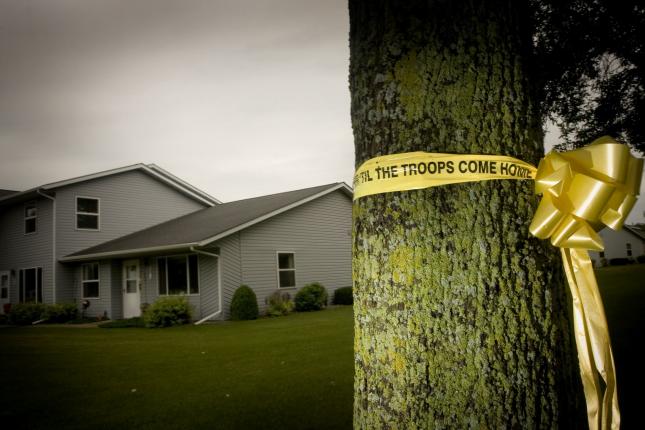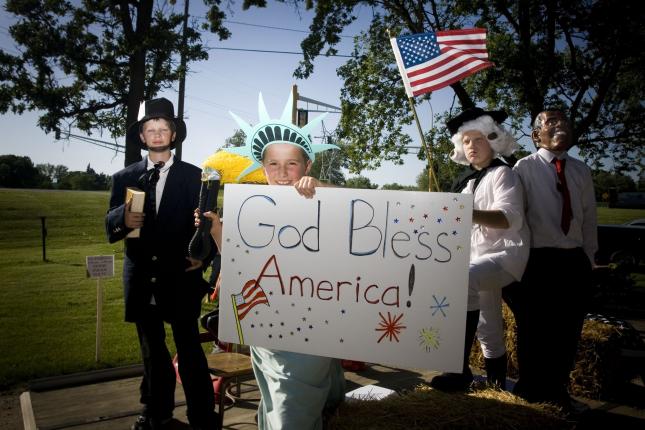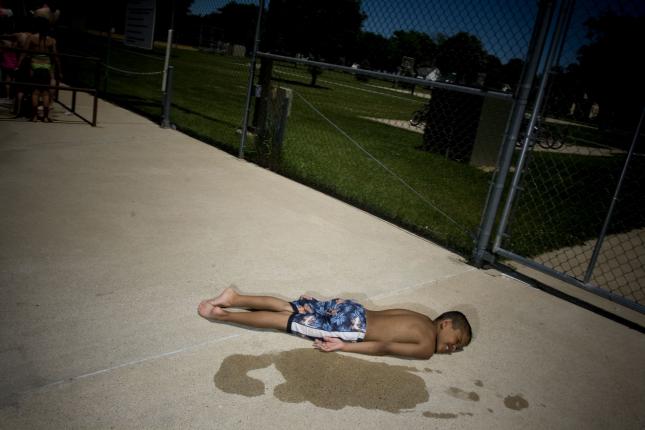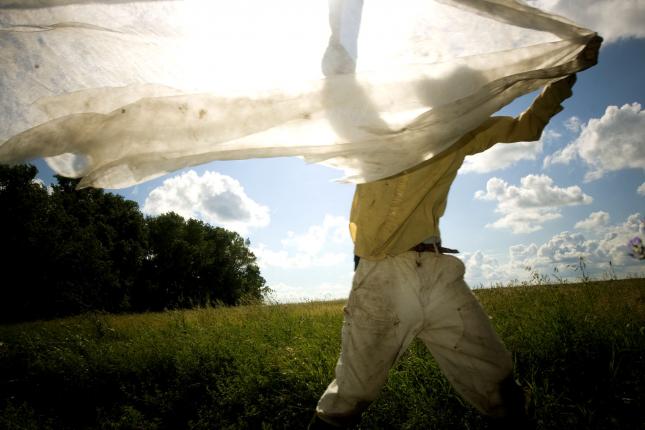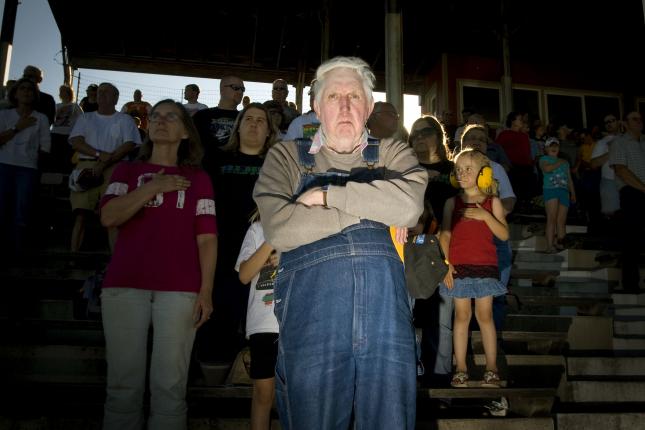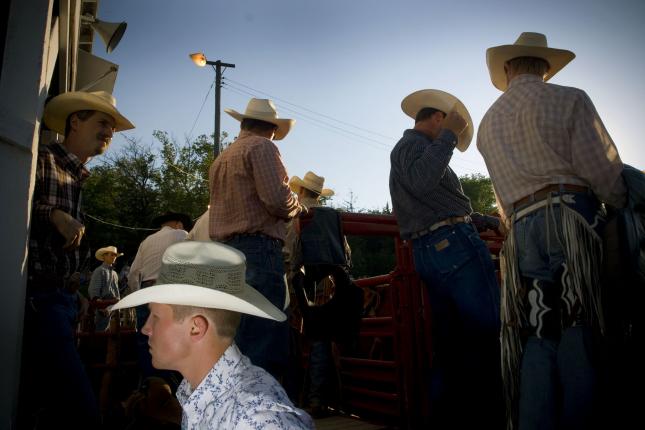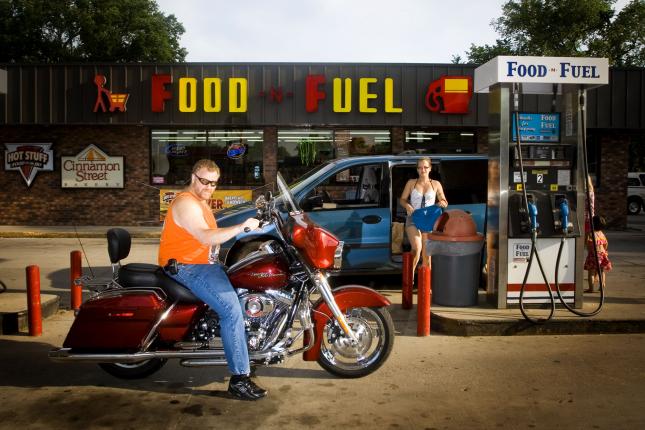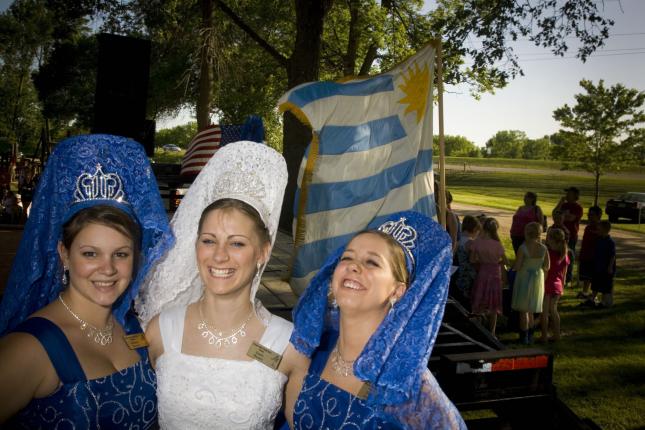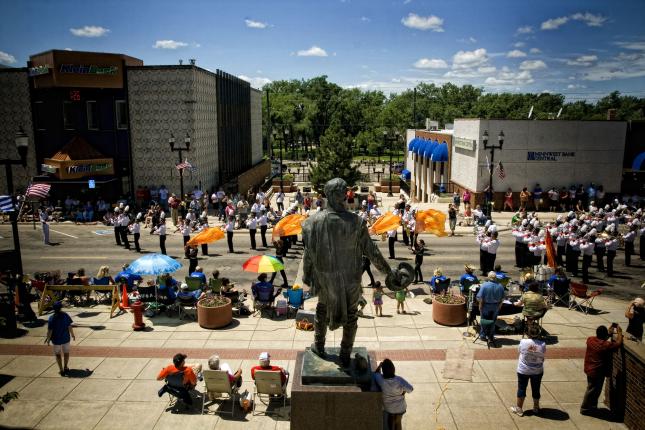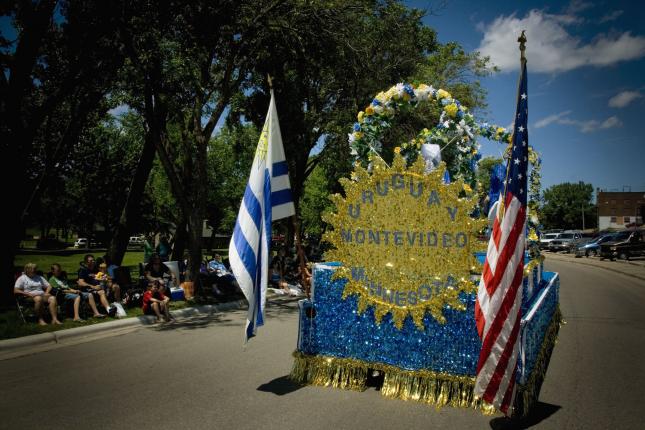Hello Montevideo
Descripción
Cuando decidí encaminar este proyecto fotográfico tenía algunos datos sobre el Montevideo norteamericano, pero, pensándolo bien, no sabía mucho. Encontré este pueblo del estado de Minnesota mientras chequeaba el clima en Internet. La web me dio la posibilidad de elegir entre varios Montevideos y en ese momento surgió mi intriga. Luego de una breve investigación pude acceder a datos que me dieron el impulso final para emprender esta aventura: el lugar tiene la estatua de José Artigas en la calle principal, su fiesta tradicional es el mismo día que el natalicio de nuestro prócer y en ella se canta el himno uruguayo mientras se elige a las reinas montevideanas. También hallé que son ciudades hermanas desde principios del siglo XX y que varias autoridades del gobierno uruguayo han visitado este desconocido punto de América. Con este buen panorama a la vista, no me quedé quieto, resolví viajar y verlo con mis propios ojos.
Cuando uno viaja siempre compara el lugar de donde viene con el nuevo; yo no veía mucha diferencia y empecé a creer que el nuevo Montevideo había sido originado allí por la similitud geográfica con el paisaje nativo de la Banda Oriental.
Al llegar al pueblo, observé que la producción rural domina el paisaje circundante, el maíz y la soja transgénica rodean la localidad, sólo pocos granjeros resisten con cultivos orgánicos. Los silos son enormes y los hay donde se mire, la autopista cruza el lugar y trae consigo las grandes superficies tipo Waltmart, que compiten con los antiguos comercios del centro. La excitación provocada por ver la palabra “Montevideo” en todos lados fue increíble: Montevideo Police, Montevideo City Hall, Montevideo Car Insurance, Monte Cleaners, Monte News; lo miraba todo desde la camioneta y sólo con los días me pude acostumbrar. En la First street se desarrollan la vida comercial y cultural, en el medio de esta calle se encuentra la Artigas Plaza, el espacio público donde está la estatua del prócer, José Artigas, y donde se hacen las ceremonias importantes de esta sociedad.
Durante el tiempo que viví allí conocí a mucha gente e hice buenos amigos; la gente de pueblo es siempre igual: hospitalaria y humilde. Tiene el alma apacible de las personas que viven rodeadas de naturaleza, y eso se nota. Cuando me veían caminando se ofrecían a llevarme a algún lugar o me invitaban a visitar su casa para que les contara más sobre su ciudad hermana, la capital uruguaya. La verdad es que sorprende la conexión oriental con el Montevideo de Minnesota. La estatua de Artigas desencadenó todo: a partir de que llegó, cuando en 1949 fue donada al pueblo, se creó la Montevideo Fiesta Days, en la que se decora las calles con banderas uruguayas y de Estados Unidos, y las reinas se visten con trajes antiguos inspirados en las pinturas de Figari, peineta incluida. La gente del pueblo aprende datos históricos y geográficos del Montevideo uruguayo y conoce a José Artigas como el padre de la independencia uruguaya. Artigas también está en el logo de la Policía local: todas la patrullas tienen su rostro al costado, como amenazando a los que pretenden romper la ley.
Cuando decía que era del “otro Montevideo”, la gente se ponía muy alegre de conocer a uno de los hermanos de Uruguay. Ellos sienten una gran estima por nosotros y esto realmente me sorprende.
Esta exposición refleja la sorpresa que tuve, que tengo y que resulta difícil creer: existe un Montevideo en Estados Unidos, donde Artigas también es un héroe.
---
When I decided to start this photographic project I had some information about the North American Montevideo, but to be honest, not very much. My curiosity was piqued one day when I was checking the weather online and I came across this town in the State of Minnesota when the website gave me the option of choosing between two Montevideos. After some brief research I found the information that gave me the final impulse the start this adventure: this place has a statue of José Artigas on its main street, its traditional celebration is the same day as the birthday of our national hero, and at that celebration they sing Uruguay’s national anthem while they choose the town queens. I also discovered that the two have been sister cities since the beginning of the 20th century and that various Uruguayan government authorities have visited this unknown point in America. With this panorama in front of me, I decided to travel and see it with my own eyes.
When one travels, it is normal to compare the place where they are from with the new place; I did not see much difference and I started to believe that the new Montevideo had been started there because of the geographic similarity with Uruguay’s native landscape.
When I arrived in the town I observed that rural production dominates the surrounding landscape, with transgenic corn and soy encircling the locality, and only a few farmers resisting with organic crops. The silos are huge and everywhere you look, the highway crosses the town and brings Wal-Mart type areas with it, which compete with the old businesses in the centre of town. The excitement I felt at seeing the word Montevideo everywhere I looked was incredible: Montevideo Police, Montevideo City Hall, Montevideo car insurance, Monte cleaners, Monte News; I took it all in from the car and I got used to it only after a few days in town. First Street is the commercial and cultural heart of the town, and in the middle of this street is “Artigas Plaza”, the public space where the statue of our national hero, José Artigas, is found, and where all this society’s important ceremonies take place.
During the time I lived there I met many people and made good friends; small town people are always the same: hospitable and humble. They have the mild souls of people who live surrounded by nature, and it shows. When they saw me walking they offered to take me somewhere or invited me to visit their homes so I could tell them more about their sister city, the Uruguayan capital. The Uruguayan connection with Montevideo Minnesota is surprising. The statue of Artigas started it all: since its arrival when it was donated to the people in 1949, the town began celebrating Montevideo Fiesta Days decorating the streets with Uruguayan and US flags and dressing the Queens of Montevideo in Spanish dress, ornamental comb included. The town’s people learn the historic and geographic facts of Montevideo Uruguay in school and know that José Artigas is the father of Uruguayan independence. Artigas is also on the local police logo and all patrol cars have his face painted on their side - threatening those who consider breaking the law.
When I talked about the “other Montevideo” people were very happy to meet one of their Uruguayan brothers. They hold us in great esteem and this truly surprised me.
This exhibition reflects the surprise I had and have and which is difficult to believe: there is a Montevideo in the United States where Artigas is also a hero.
Fecha
-
Desde el 02/08/2013 hasta el 30/09/2013 en Fotogalería Ciudad Vieja
Autores
-
Federico Estol (UY)
Datos Técnicos
Impresión: Cuatro Tintas. Fotografías impresas en impresora Mutoh 1614 con tintas ecosolventes sobre vinilo adhesivo Intercoat.
Descargas
Convocatorias
El Centro de Fotografía realiza anualmente convocatorias abiertas para editar libros y exponer muestras fotográficas en los diferentes espacios que gestiona, a partir de las propuestas de autores uruguayos y residentes en Latinoamérica. Los trabajos son elegidos por un comité de selección externo al CdF que cambia año a año.
Las bases de todos los llamados puede consultarse en la página de convocatorias.

